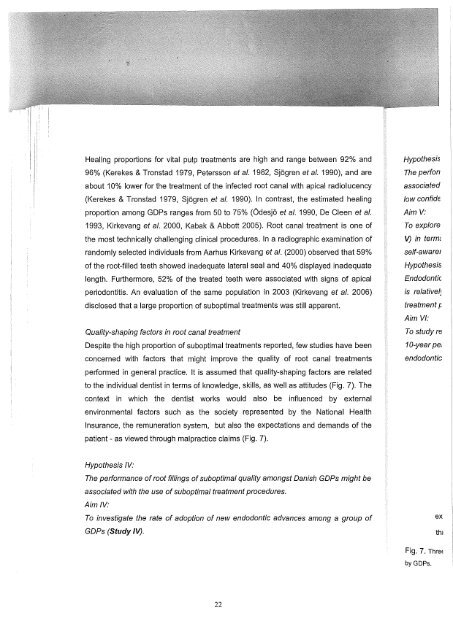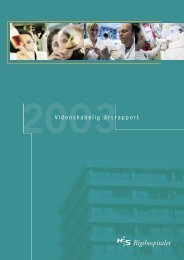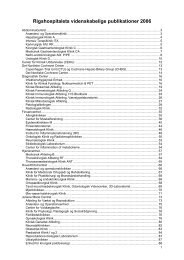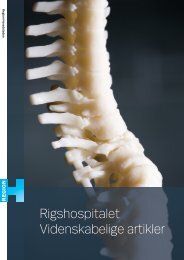View - CTU
View - CTU
View - CTU
You also want an ePaper? Increase the reach of your titles
YUMPU automatically turns print PDFs into web optimized ePapers that Google loves.
Healing proportions for vital pulp treatments are high and range between 92% and<br />
96% (Kerekes & Tronstad 1979, Petersson et al. 1982, Sjogren et al. 1990), and are<br />
about 10% lower for the treatment of the infected root canal with apical radiolucency<br />
(Kerekes & Tronstad 1979, Sjogren et al. 1990). In contrast, the estimated healing<br />
proportion among GDPs ranges from 50 to 75% (Odesjo et al. 1990, De Gleen et al.<br />
1993, Kirkevang et al. 2000, Kabak & Abbott 2005). Root canal treatment is one of<br />
the most technically challenging clinical procedures. In a radiographic examination of<br />
randomly selected individuals from Aarhus Kirkevang et al. (2000) observed that 59%<br />
of the root-filled teeth showed inadequate lateral seal and 40% displayed inadequate<br />
length. Furthermore, 52% of the treated teeth were associated with signs of apical<br />
periodontitis. An evaluation of the same population in 2003 (Kirkevang et al. 2006)<br />
disclosed that a large proportion of suboptimal treatments was still apparent.<br />
Quality-shaping factors in root canal treatment<br />
Despite the high proportion of suboptimal treatments reported, few studies have been<br />
concerned with factors that might improve the quality of root canal treatments<br />
performed in general practice. It is assumed that quality-shaping factors are related<br />
to the individual dentist in terms of knowledge, skills, as well as attitudes (Fig. 7). The<br />
context in which the dentist works would also be influenced by external<br />
environmental factors such as the society represented by the National Health<br />
Insurance, the remuneration system, but also the expectations and demands of the<br />
patient - as viewed through malpractice claims (Fig. 7).<br />
Hypothesis<br />
The pei1on<br />
associated<br />
low confide<br />
Aim V:<br />
To explore<br />
V) in term~<br />
se/f-aware1<br />
Hypothesis<br />
Endodontic<br />
is relative/]<br />
treatment f:.<br />
Aim VI:<br />
To study re<br />
10-year pe.<br />
endodontic<br />
Hypothesis IV:<br />
The performance of root fillings of suboptimal quality amongst Danish GDPs might be<br />
associated with the use of suboptimal treatment procedures.<br />
Aim IV:<br />
To investigate the rate of adoption of new endodontic advances among a group of<br />
GDPs (Study IV).<br />
ex<br />
th1<br />
Fig. 7. Three<br />
by GDPs.<br />
22








